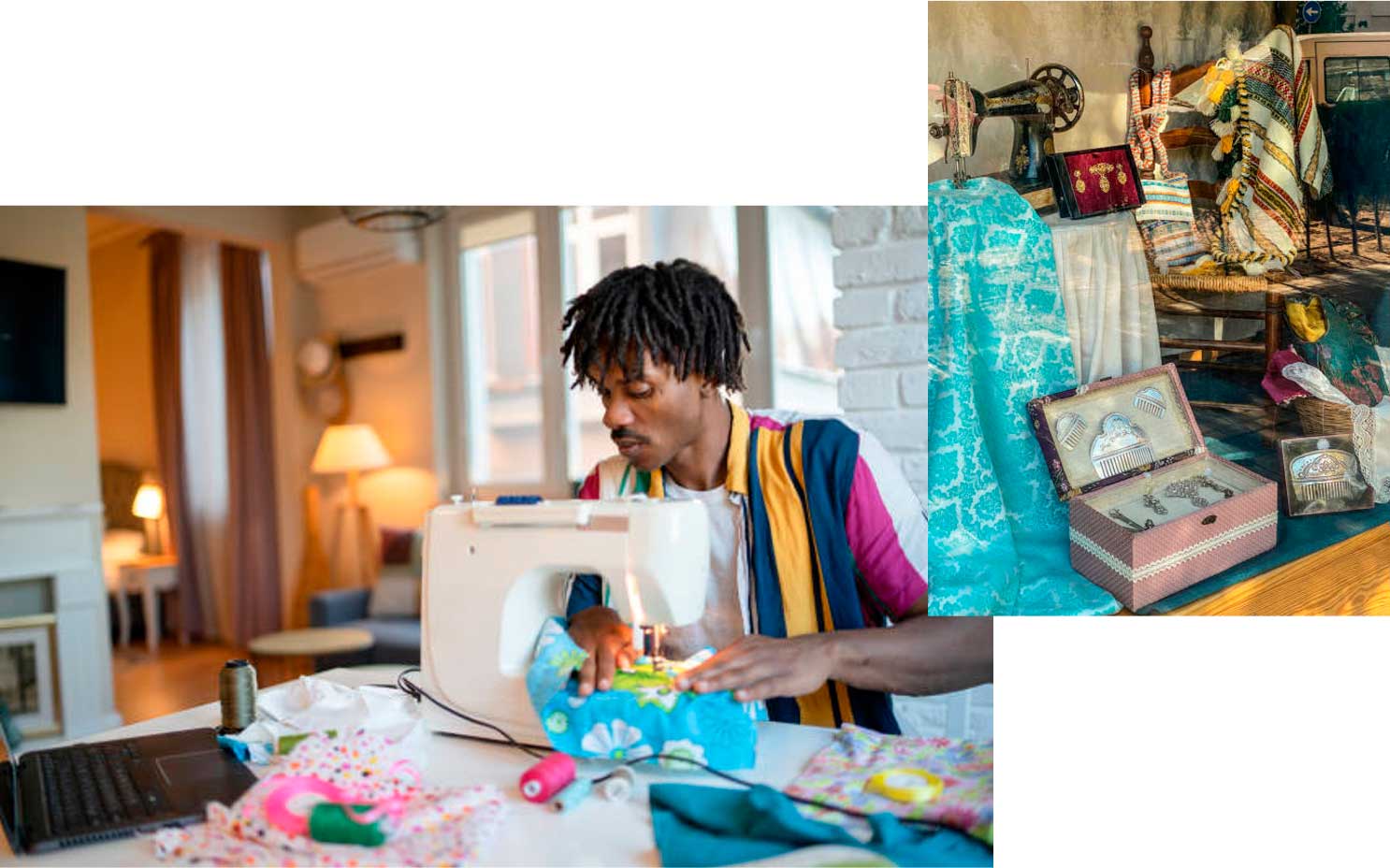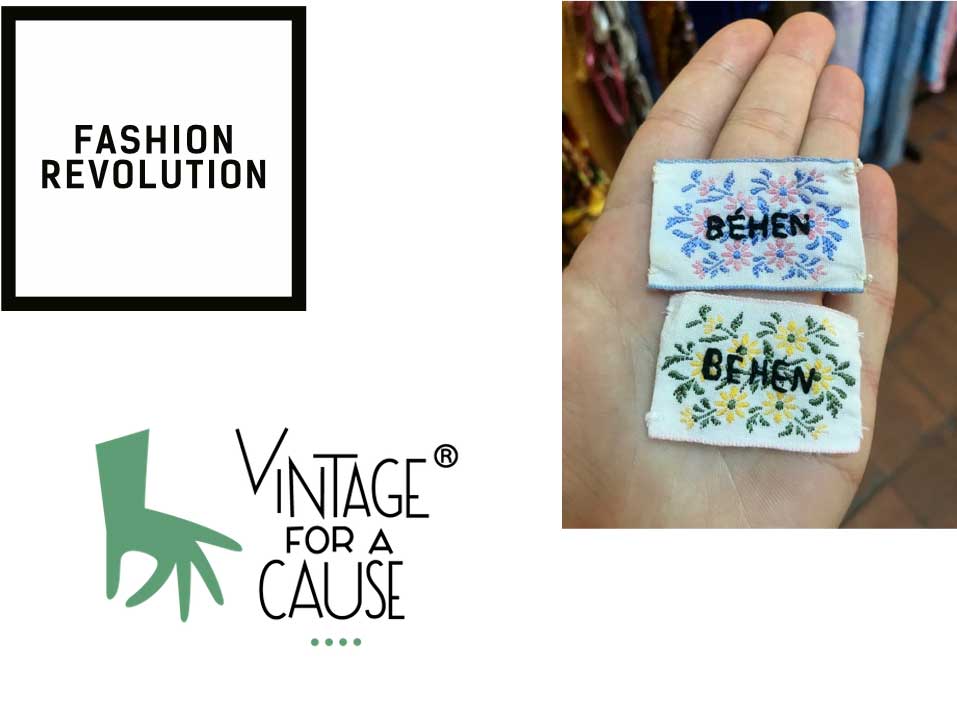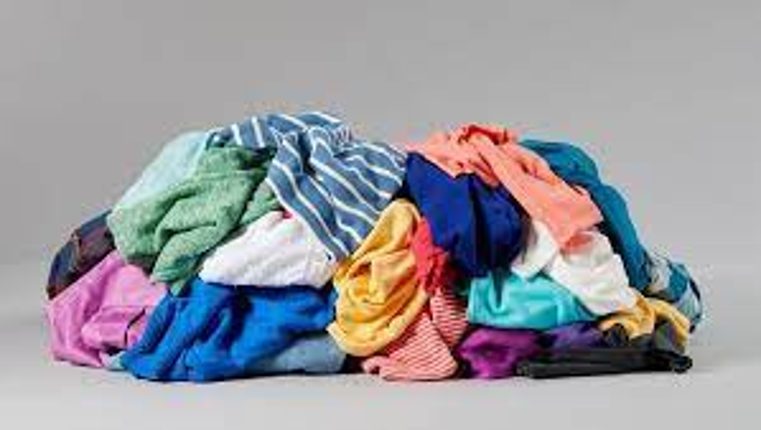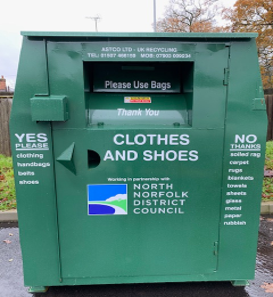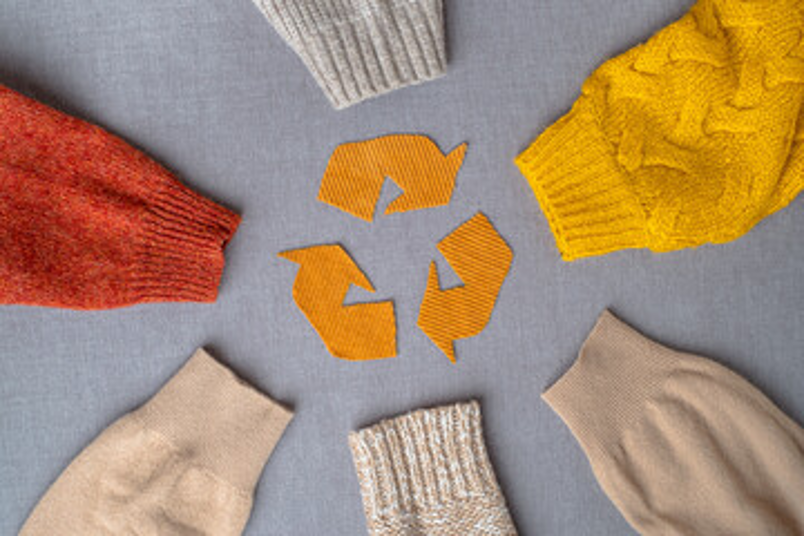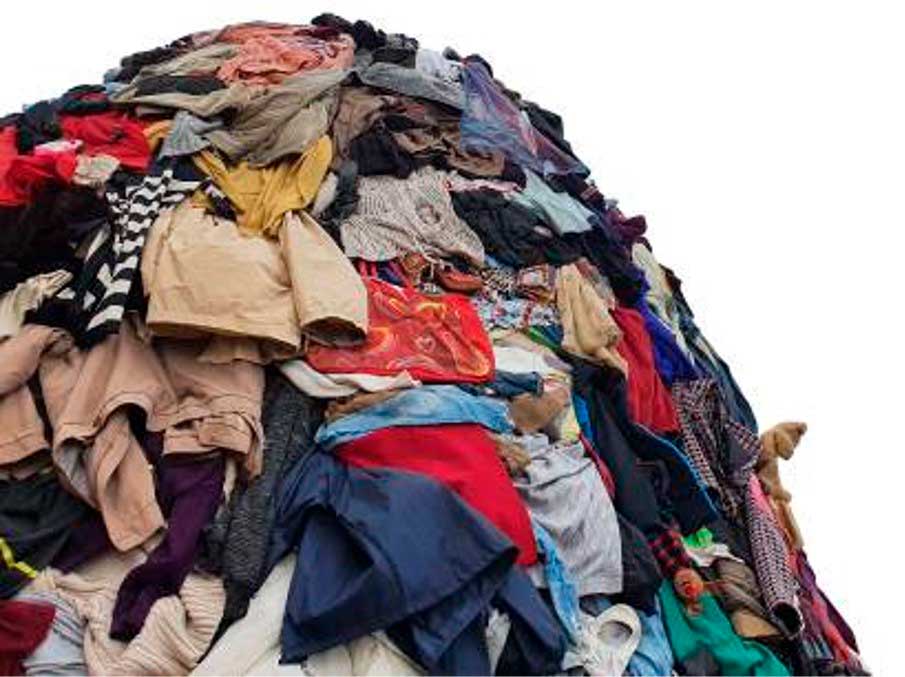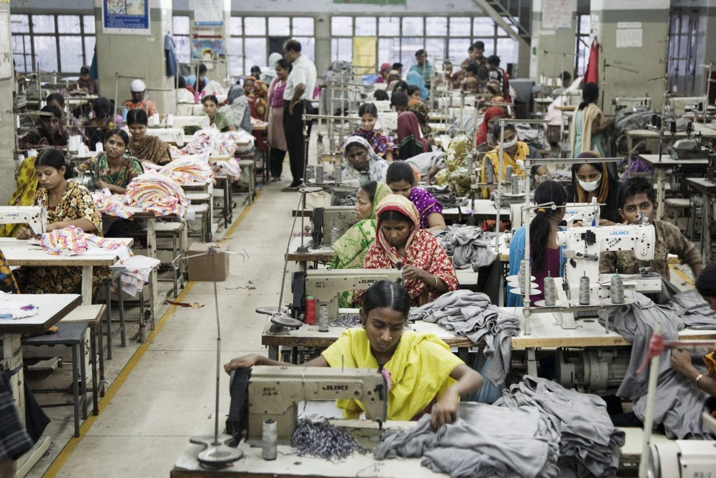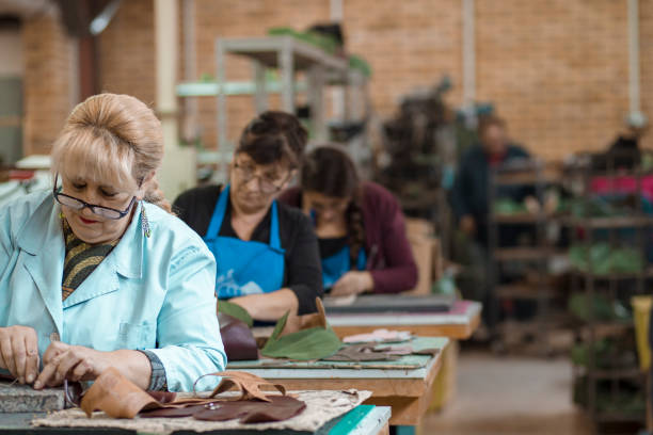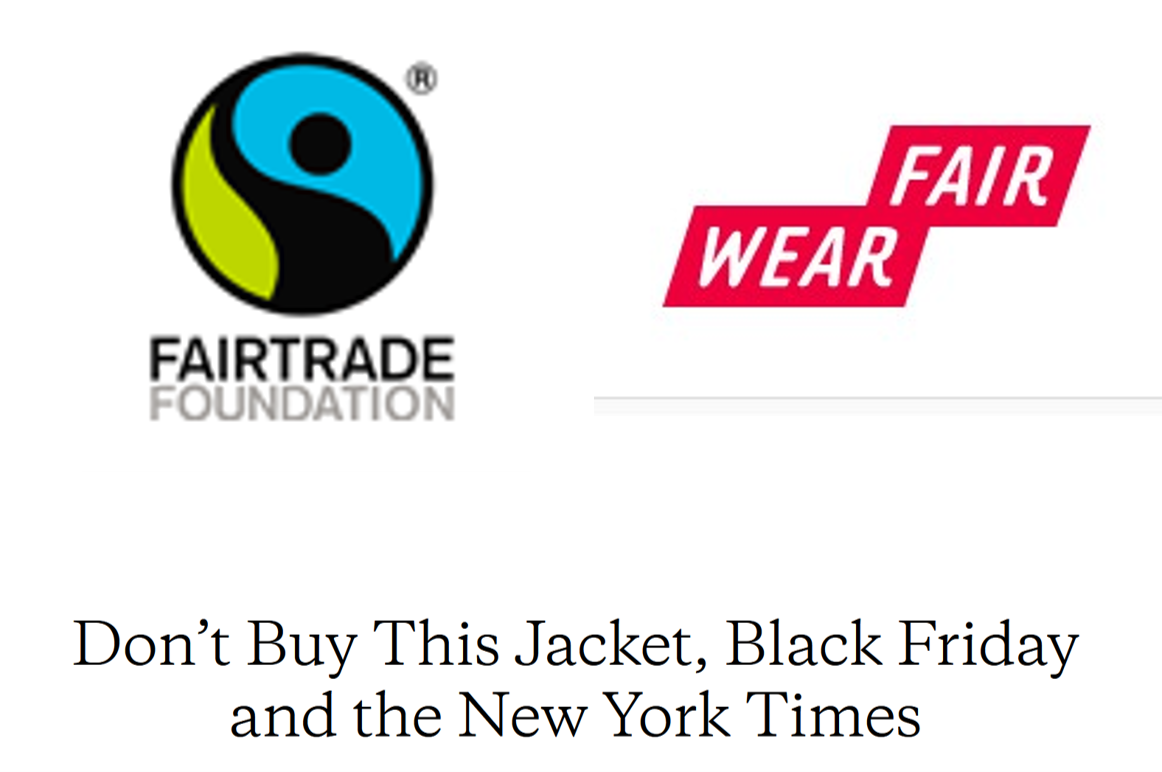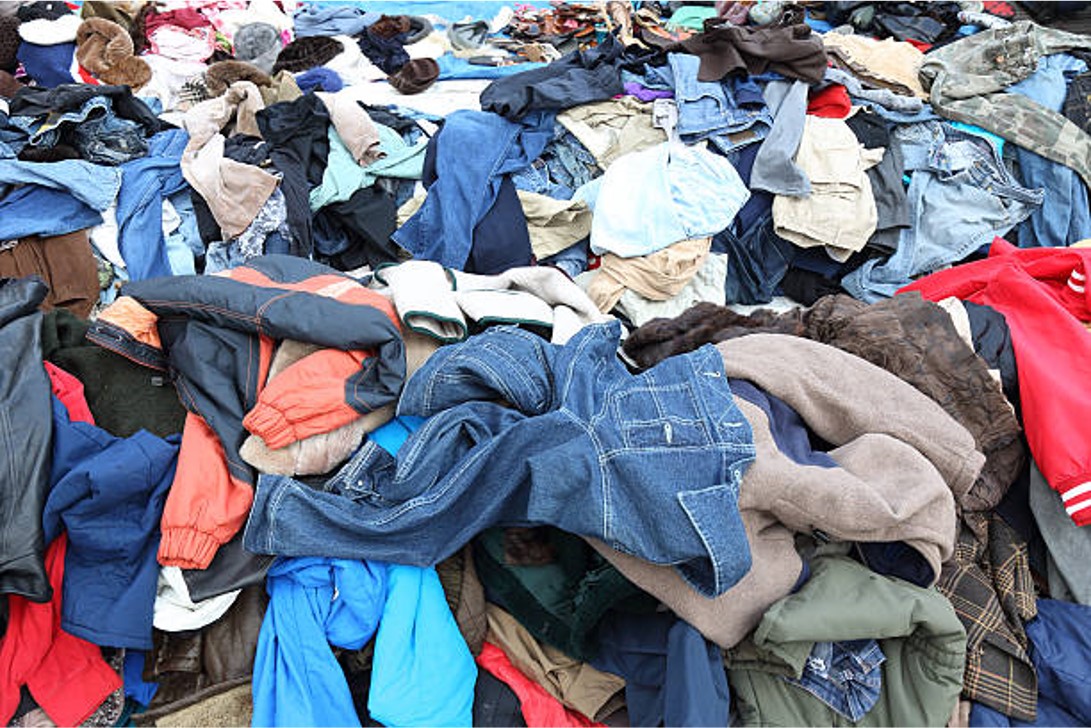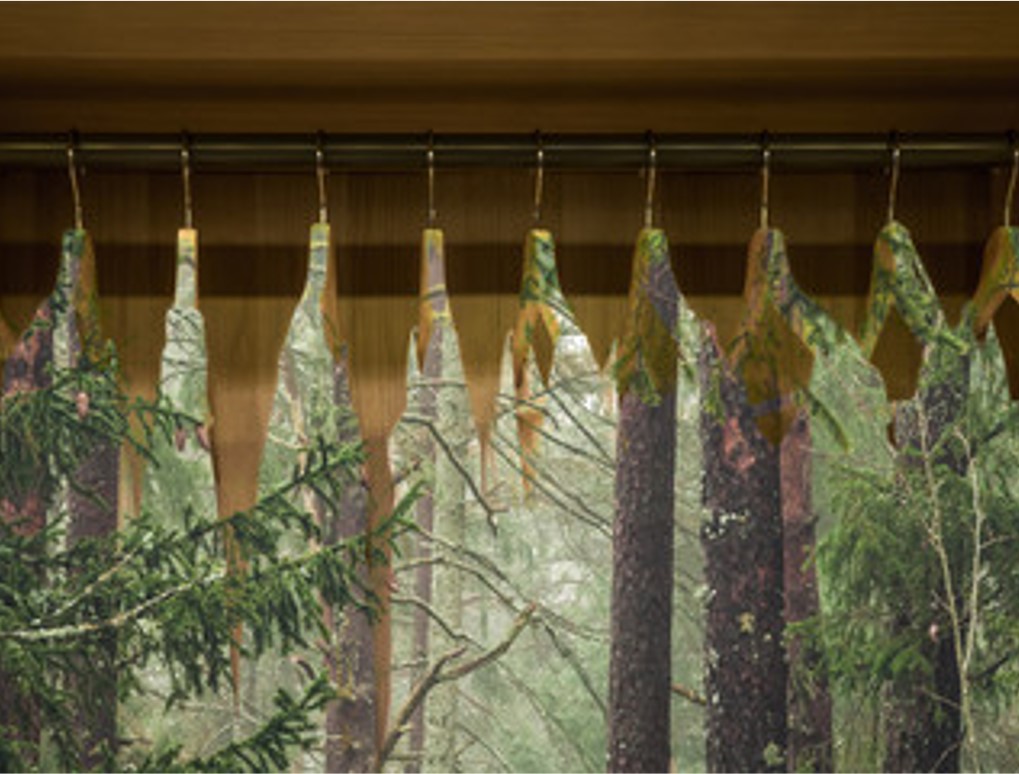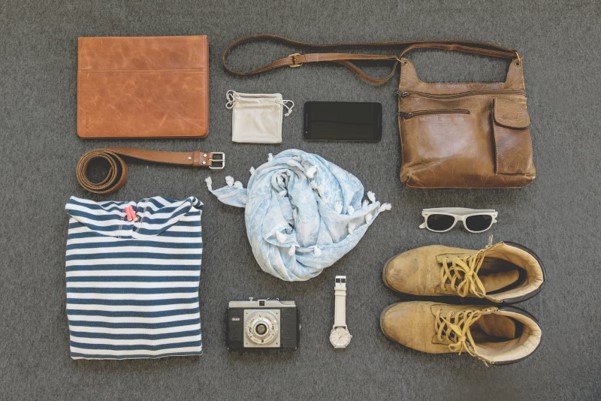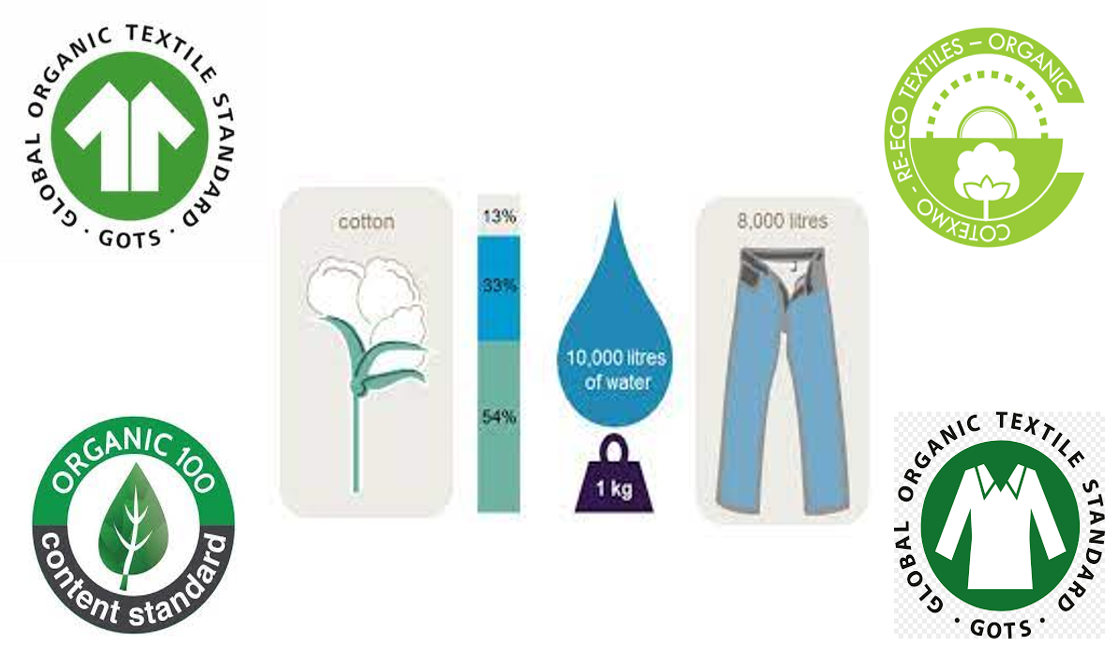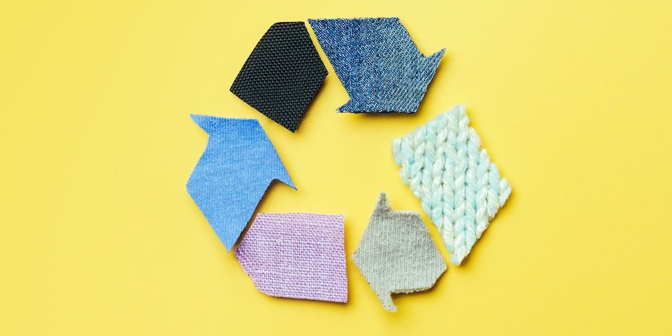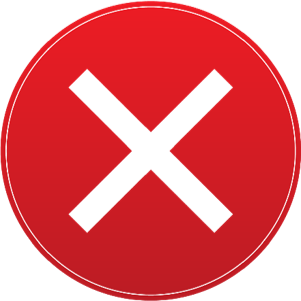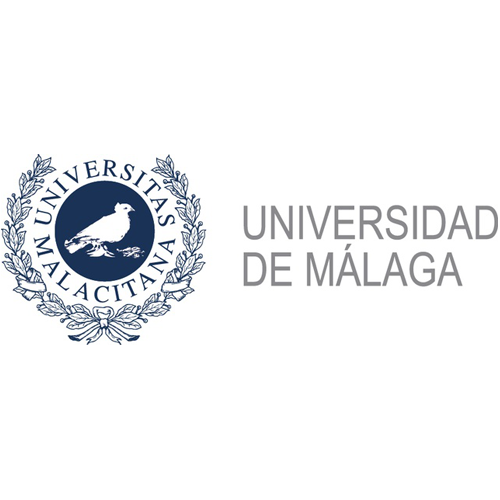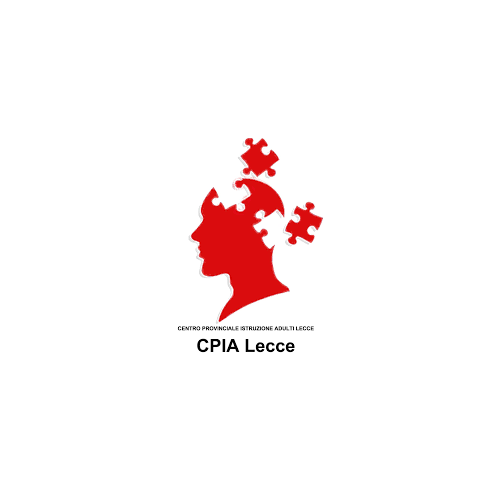EduCARE
Responsible consumption on Clothing
Basic|
VIDEOS

| ||||||||||||||||||||
|
Responsible consumption on ClothingClick to read
 Introduction:Responsible fashion consumption consists of the conscious and informed choice made when purchasing/consuming a garment or textile product, considering not only the need to acquire the part, but also what impact its production process had, the consumption of resources it will have throughout its useful life and how, in the future, we can proceed with its disposal creating the least possible impact. The main objective will always be to ask ourselves, in the first place, about the real need to acquire that particular piece, and if we need to buy a piece firsthand, or if we can consider other alternatives, such as a loan, exchange or even second-hand purchase. At the end of its life, when it is no longer possible to continue to be used, we must try to understand what other possible use it would have, such as how to reuse the fabric for a sewing project, the trimmings (e.g., clasps, buttons) or, at the limit, transform the piece into cleaning cloths, for example.
Topic development:Due to the rise of fast-fashion (a term used to describe clothing designs that quickly move from the catwalk to the stores to take advantage of trends) at very low prices, it is now possible to purchase and consume more clothes than ever before. This implies that items are used only a few times and then discarded. On the other hand, slow fashion uses environmentally friendly processes and materials, focusing on quality rather than quantity. Responsible consumption of clothing or textiles will have several impacts at an individual level, as well as at others, diversified levels. At the individual level, by making a more thoughtful and informed choice, the consumer will create a more personal and conscious relationship with the pieces to be used. By opting for the arrangement, patching and personalization of the pieces, we will also develop a greater sense of belonging that will make it more natural and intuitive to prolong the life of the piece and increase consideration for it in the act of disposal. From other points of view (e.g., economic, social and cultural, environmental) the consumer's choice of products that are produced in a more sustainable way will have a multiplier effect on the people around him and on the community in which he is inserted. The scaling of this effect will force brands and companies to readjust their processes to meet these new choices, naturally impacting production conditions, consumption of natural resources and waste management. The longer use of the parts and their proper and late disposal will reduce waste and consequently its impact on the environment (better quality of soil, water and air). Once the purchase/consumption is made, the objective will be to prolong the life of the part as much as possible. For this, we must practice proper washing and maintenance (according to the information found on the label), preferring repair and beautification whenever necessary and possible. Once the piece no longer makes sense, whether for reasons of size, usefulness or change in taste, and if it is still in good condition, consider donating or exchanging.
Good practices:In accordance with the above concepts, the examples proposed are based on an approach focused on services and alternatives to traditional consumption instead of showcasing products that, even though are created with a more conscious purpose, are still produced from scratch, having a bigger impact than a product that already exists. Below is a selection of what we believe to be the best practices to achieve a more responsible consumption:
For further options, check Good on You, an online directory that rates fashion brands based Planet, People and Animals sustainability.
Current and future challenges:The continuous growth of the textile industry - with clothing representing the largest part of EU textile consumption (81%) - has been leaving a trace of environmental, social and human impacts that are unsustainable for the planet. In the future, there will be two main challenges to this industry. The first is how the brands and companies can inform their clients in a transparent and clear way. Consumers will be more demanding and information about where the clothes are made or what type of materials were used are going to be important selling points. The other aspect is how these “new” ways of consumption - swap, second hand, upcycle - will turn into the mainstream, without losing the characteristics that make them more sustainable ways of acquiring clothes. To reverse the overproduction and overconsumption of clothing, a transition to a more sustainable, circular model is needed. This means starting to think at textile sustainability from the design stage, using safe and recycled inputs and extending the life cycle of the products, creating products that can be used more and that are ready to be recycled or reused.
Further references:Sustainability Literacy Class 1 (slowfactory.earth) Sustainability Literacy Class 2 (slowfactory.earth) The weight of the economy in ClothingClick to read
 Introduction:Clothing accounts for more than 60% of all textiles used and, in the last 15 years, its production has doubled in mature economies.
Companies and fashion brands are starting to integrate sustainability or circularity components in their production processes and new business models are emerging to tackle these problems and embrace these concerns. Based on the Ellen MacArthur´s framework, there are currently 4 business models that circulate materials and products: rental, resale, repair and remake. Rental includes several schemes in which clothes are temporarily used by a customer, afterwards returning them to be used by another person. This can be done by peer-to-peer, large scale rentals and subscription models. Resale includes online and offline peer-to-peer sale, third-party marketplaces and own-brand re-commerce. Repair consists of returning a faulty or broken product to a usable state, and Remake happens when a product is created from existing products or components. Impacts/Benefits:The four circular business models - rental, resale, repair and remake - are already worth more than USD 73 billion and the market will still grow in the next few years. It is estimated that, by 2030, it will account for 23% of the global fashion market. As shown, there is an increased interest in these new circular business models since there is more information and awareness about the negative impacts of the fast fashion industry. Consumers are more aware of the impact of their purchasing choices, and, consequently, more demanding about sustainable and ethical practices, especially from big companies. In general, a more educated consumer will require more information and transparency in order to choose wisely where to buy the products they need. This will lead companies to change and improve their production practices and comply with the market criterion. Therefore, new and future investments made by fashion brands need to take in consideration these changes, and companies that don't keep up with it will experience a decay in consumer perspective and on their revenues.
Good practices:There are more and more emerging brands already reflecting on these problems within the clothing industry. However, it must be taken into account that it is not possible to catalog any fashion brand as an example due to the lack of transparency of its processes and the social and environmental practices of its businesses. Within this framework, some brands are worth being mentioned as they have aspects that can be considered good practices:
For further options check Good on You, an online directory that rates fashion brands based on Planet, People and Animals sustainability.
Current and future challenges:Implementing circular business models will greatly impact the economic status quo of the fashion industry.
If the industry starts to shift and decreases its use of virgin materials, although there is a positive impact, small businesses (including farmers and workers at factories) will be the ones suffering the most economic impact. Therefore, this transition needs to be done while these workers are being trained and relocated to other new functions or jobs. Brands will also have to start offering different types of services - based on the 4 circular business models mentioned above - to show customers their commitment to a more sustainable and circular industry. This will also make it easier for customers to change their consumption habits and behaviors. This is the reason why, on the consumer side, most relevant challenges are related to the high prices of sustainable clothes - when compared to fast fashion ones - requiring a shift in the customer's mindset. Education and awareness campaigns will be important to explain why it is necessary to buy according to different criteria, not focusing mainly on cheap prices. Further references:https://www.mckinsey.com/industries/retail/our-insights/state-of-fashion-technology-report-2022 https://ellenmacarthurfoundation.org/news/circular-business-models-in-the-fashion-industry Citizens as the core agents of change on ClothingClick to read
 Introduction:The fast-fashion concept emerged in the 1990s with large fashion companies beginning to mass produce clothes. In terms of labor rights, this industry is still, in many cases, breaking the law, with human rights violations still a practice that affects many of the 75 million people working in the textile industry.
Particularly in countries such as Bangladesh, Indonesia, Sri Lanka and the Philippines, many cases of child labor and modern slavery are reported. Also, many factory workers are paid below the legal minimum wage, forced to work long hours in unsafe environments, and with no access to health care or paid leave. The fashion industry also took advantage of the development of faster and more efficient trade routes that facilitate transactions across the world. Value chains have become increasingly complex, with multiple intermediaries, from production to sale. Thus, consumers have unlimited access to all types of clothing at any time (using e-commerce), leading to excessive, unsustainable and unethical consumption of clothing. Impacts/Benefits:A global change is needed both relating to the conditions of workers in the fashion industry and to the information and knowledge that the public has about these conditions and practices. A more responsible consumption, that is, more informed and aware of the social impacts that the fashion industry has, can trigger processes of change in working conditions. The awareness that workers in textile factories are mostly exploited, discriminated against and mistreated, should promote behaviors such as not buying new pieces of clothing from brands that maintain these practices.
Consumer pressure can be a lever for these changes. On the other hand, on the part of brands, if there is an effort to improve and adapt working conditions, it will not only lead to their being recognized for their efforts, which will bring reputational and economic benefits, but will lead to an increase in prices, being more realistic and fairer. It is up to companies to provide these changes and to consumers to press and then understand why it is not possible to have access to the volume of clothes they used to have and the prices that existed. Good practices:Consumers and companies should be equally involved in the observation and implementation of good practices. Consumers can look for sustainable brands that work and present value chains in a transparent way, that is, in which it is communicated where and how raw materials are extracted and how their transformation process is. They can also find out about brands that respect environmental certifications such as the Fairtrade Foundation (its website, among different kinds of information, also provides campaign materials to alert on the topic) or the Fair Wear Foundation (its website also presents the joint position on the European Union strategy for ensuring human rights on sustainable textiles).
Moreover, companies influence the behavior of their customers through their communication campaigns, as Patagonia did, on Black Friday, with its campaign “Don´t buy this jacket”, encouraging their customers not to buy clothes on that day. This type of campaign not only conveys the brand's commitments and values to the public, but also encourages consumers to behave more sustainably. The Clean Clothes Campaign is a global network operating in 45 countries that connects industry-wide actors, civic organizations and labor rights unions. It aims to ensure that fundamental workers' rights are respected by educating and mobilising consumers. Current and future challenges:In general, the fashion industry has as one of its main obstacles the respect and guarantee that its production is not being carried out by slave or almost slave labor. Working conditions in factories and along the value chain of this industry must be monitored to ensure that workers do not remain in precarious work situations. Companies must be held accountable for the working conditions that their workers (even if subcontracted) have in the fields and factories. Consumers, on the other hand, must be informed and have access to information, in a transparent and truthful way, about the company's work policies. Likewise, they can and should pressure companies to change them if it is public knowledge that policies are not complying with standards. The great challenge is to have access to information and to be able to put pressure on this behavioral change in an integrated and collective way.
Organizations like Fashion Revolution can significantly contribute to collective action on a global scale. Further references:Columbia Climate School. Why Fashion needs to be more sustainable. 2021. Clean Clothes Campaign: Environmental sustainability in ClothingClick to read
 Introduction:
There is an environmental cost of fashion and some figures may help understand the impact fashion has on the environment: the equivalent of one garbage truck full of clothes is burned or dumped in a landfill every second; approximately 60% of all materials used by the fashion industry are made from plastic; the fashion industry is responsible for 8-10% of humanity’s carbon emissions – more than all international flights and maritime shipping combined. Also, the fashion industry contributes significantly to the loss of biodiversity. It is estimated that cotton alone uses about 23% of the insecticides used globally and that 25% of water pollution results from dyeing and treating textiles. Likewise, the textile clothing industry is responsible for an estimated use of 93 billion cubic meters per year, the equivalent of 4% of all fresh water available. When focused only on the clothing industry, water consumption is around 62 million cubic meters per year. This means that there is an urgent need to slowdown the environmental footprint of fashion. Impacts/Benefits:The environmental impact of more responsible consumption depends on the type of actions and their scale of application, but reducing consumption or reassessing the need to purchase is the aspect that presents the most significant results, if accompanied by a slowdown in production and respect for the raw material processing. A more responsible consumption of clothes depends on: the more frequent use of clothes that already belong to the consumer; the act of lending, adopting, offering or exchanging clothes in the consumer’s social circles; the life prolonging of clothing through practices of repair or transformation; learning how to make their own clothes; second-hand purchases, over which smaller or local businesses should be prioritized; consciously buying clothes from designers or brands where it is possible to get a closer look at the production chain and its practices.
Studies also show that contact with nature and activities related to the individual's well-being are positively linked to a more thoughtful reassessment of the need to buy and the reduction of consumption. The individual's political awareness and civic participation in collective actions (participating in public consultations, joining movements or organizations that defend the sector's transparency and sustainability, or participating in awareness and training events on these topics) have more impact on systemic change in the fashion industry than just consumer behavior. Good practices:As a general rule, it should be considered that, due to the lack of transparency in environmental processes and practices, it is very difficult to classify a fashion brand as a perfect example to be followed. However, and in this framework, some brands deserve to be highlighted for presenting aspects that can be considered as good practices, while others deserve to be highlighted for the contrary action:
Current and future challenges:Sustainability is increasingly dominating the concerns of consumers and, consequently, brands and companies in the fashion industry. Consumers want to have access to more information about brands and companies’ environmental sustainability policies.
In response to this growing concern and demand from their customers, fashion companies and brands have readjusted their offer and their narratives following an inevitably economic rationale, while trying eco-efficiency-based strategies to meet profit targets or replace its raw material through extraction and transformation processes that are less harmful to the environment.So-called "greenwashing", a strategy that uses misleading communication to persuade the public that organizations, products or services are environmentally friendly, is not so, arises easily, and although the European Union has presented plans to provide consumers with tools to distinguish greenwashing practices, the current economic system itself depends on higher consumption, which makes it extremely difficult to contain. Further references:Harvard Business Review, 2022. Global Fashion Agenda. 2021. Movie “The True Cost” First steps towards responsible consumption on ClothingClick to read
 Introduction:Sustainable fashion often gets a bad rap for being expensive and out of reach for most people. However, many people forget that the most sustainable thing to do is to consume less (thinking about whether or not you need to buy that piece) and consume better (in the most conscious, critical, solidary and sustainable way possible). Be intentional about every item you bring into your wardrobe and into your life.
The idea is ‘you can do more’, starting with the clothes you already have and asking yourself:
How can I get rid of those that no longer serve me and/or I no longer identify with, but are still in good condition? (Consider targeted donation, exchange in dedicated markets, or transforming the piece to match what you would like it to be). Tips and recommendations todo /Not to do:We are what we do and we inspire others with our behaviors. To help you become a more fashion-conscious consumer, here is some practical advice that can drive you to change your fashion consumption habits: ‘TO DO’
‘NOT TO DO’
Do not by clothes that do not match your fashion style and have nothing to do with you. Make sure you only buy clothes that you really like. Further references:https://www.panaprium.com/blogs/i/consider-when-buying-clothes https://www.sustainablejungle.com/sustainable-fashion/how-to-avoid-fast-fashion/ https://cobaltstreet.com/blogs/news/7-steps-to-becoming-a-more-conscious-fashion-consumer https://thecanoshoe.com/blogs/blog/6-ways-to-become-a-more-conscious-consumer https://eco-age.com/resources/how-care-your-clothes-and-keep-them-longer/ |
Area
Clothing
LevelBasic
KeywordsClothing; Responsible Consumption; Conscious; Sustainability; Upcycling; Fast-fashion; Empowering Consumers
 Play the game
Play the game Send us your opinion!
Send us your opinion! Play Audio
Play Audio 


